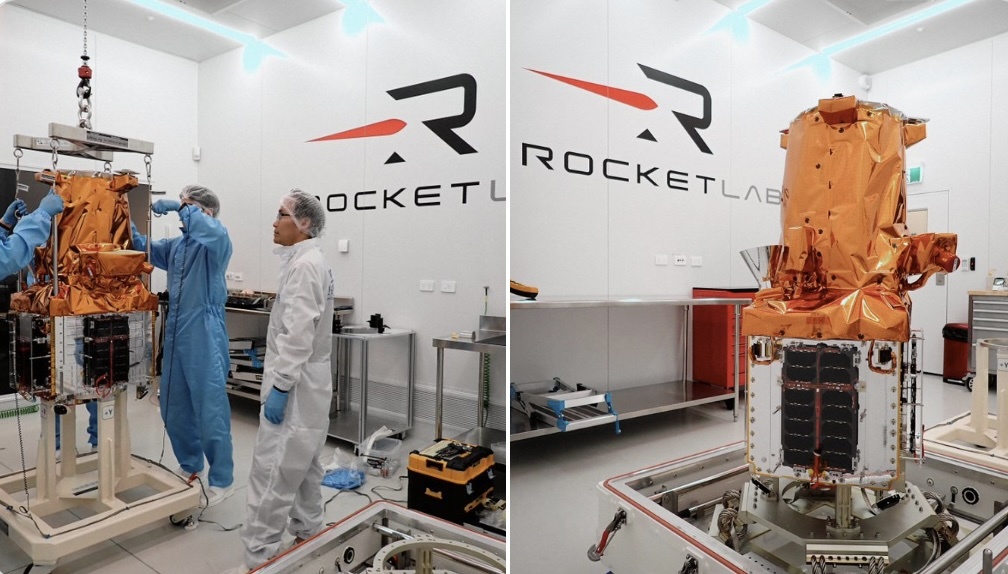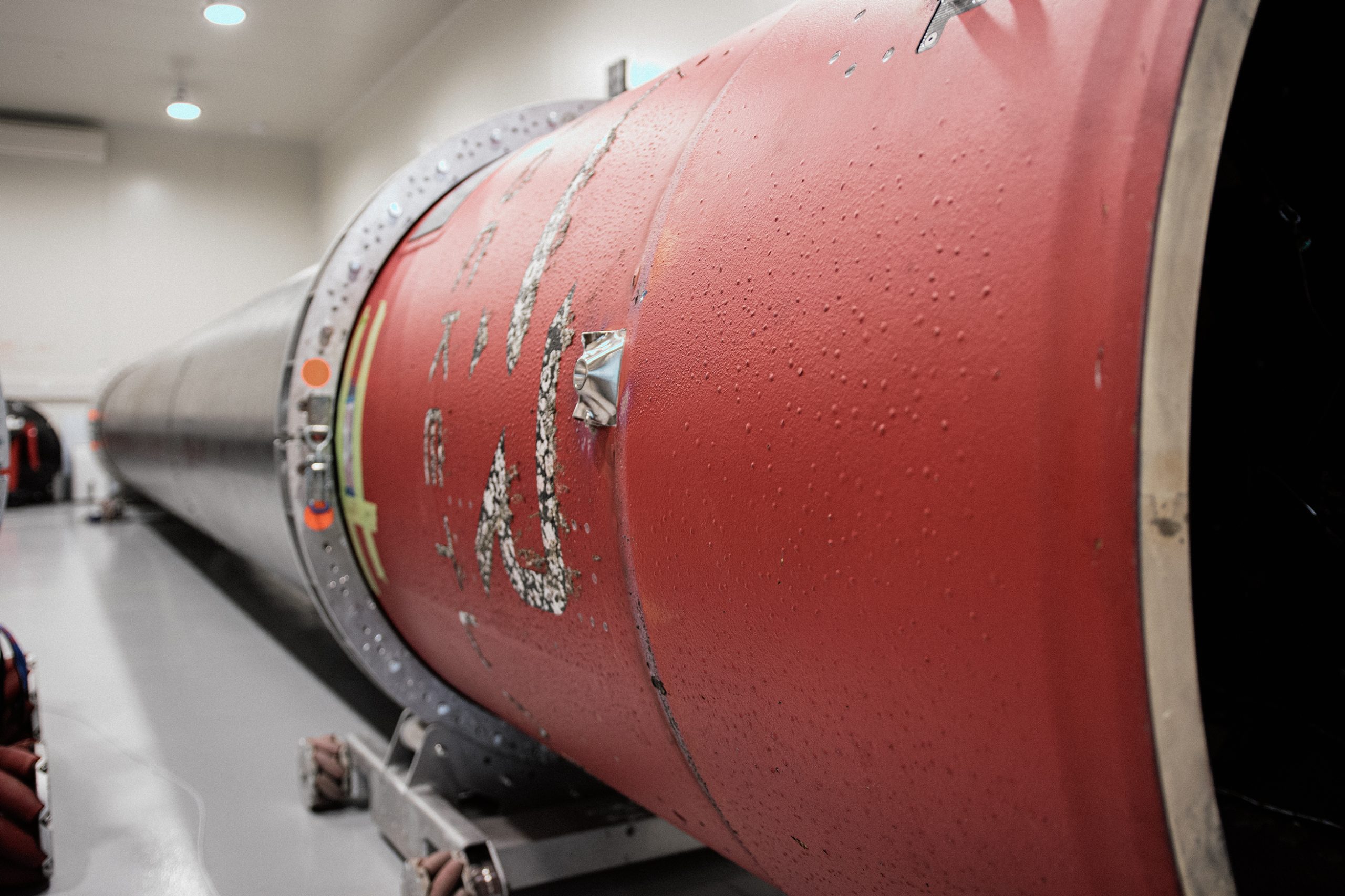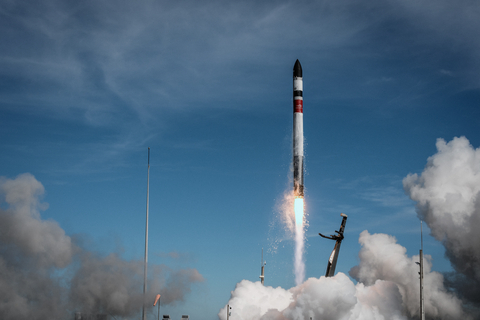11.04.2024
Rocket Lab prepares for next launch, moves closer to Electron reusability

Rocket Lab is readying for its next launch no earlier than April 24th from Launch Complex 1 on the Mahia Peninsula in New Zealand.
The mission, Beginning of the Swarm, will feature two payloads being deployed to completely different orbits.
The primary payload for this mission, NEONSAT-1, is for the Korea Advanced Institute of Science and Technology and Satellite Technology Research Center and is an Earth observation satellite with a high-resolution camera to help monitor the Korean peninsula during natural disasters. This will be the first of an 11-satellite constellation for the country.
NEONSAT-1 will be deployed into a 520km circular Earth orbit.
The secondary payload is NASA’s Advanced Composite Solar Sail System, or ACS3. This cubesat is meant to test new materials used on deployable booms that will hold a solar sail. Once fully unfurled, it will measure approximately 30 feet per side.
ACS3 will be deployed into a 1000km circular Earth orbit after Rocket Lab’s Curie kick stage performs an orbit-raising maneuver and then once deployed, the kick stage will ignite once more to lower its orbit to ensure a quicker re-entry into the atmosphere and not turn into space debris.
Rocket Lab moves closer to first stage re-usability

Rocket Lab announced today at the Space Symposium in Colorado that they have brought a previously flown Electron first stage back into the production line.
The first-stage tank has already undergone extensive testing, including holding excess pressure for more than 20x a normal flight duration, leak checks, and structural testing, which allowed it to re-enter the production line.
This specific first stage flew the Four of a Kind Mission on January 31st. Rocket Lab did not indicate if any of the Rutherford engines that flew on that mission will be re-used or if they will be all new. The company has also yet to disclose which payload will be launched using the flight-proven first stage.
Rocket Lab is certainly making strides towards full first-stage reusability on Electron and also gathering valuable data that will help them recover Neutron, their future medium-lift rocket.
Do you think Rocket Lab will be flying re-used Electron stages frequently by the end of this year, or could they run into issues as they progress towards that goal?
Quelle: TESLARATI
----
Update: 24.04.2024
.
Rocket Lab Successfully Deploys Satellites ~500km Apart to Separate Orbits For KAIST and NASA

Successful lift-off for Rocket Lab's 47th Electron launch carrying two missions for KAIST and NASA. (Photo: Business Wire)
MAHIA, New Zealand--(BUSINESS WIRE)--Rocket Lab USA, Inc. (Nasdaq: RKLB) (“Rocket Lab” or “the Company”), a global leader in launch services and space systems, today deployed two satellites to two different orbits approximately 500km apart on its 47th Electron mission.
The “Beginning Of The Swarm” (B.T.S.) mission lifted-off from Rocket Lab Launch Complex 1 in Mahia, New Zealand at 10:32 NZST on April 24th, 2024 with payloads for the Korea Advanced Institute of Science and Technology (KAIST) and NASA. The primary payload, NEONSAT-1 by KAIST, was first deployed by Electron to a 520km circular Earth orbit before Electron deployed NASA’s Advanced Composite Solar Sail System to a higher circular orbit at 1,000km.
NEONSAT-1 will perform Earth-observation of the Korean Peninsula for KAIST, which will then pair the satellite’s data with artificial intelligence to monitor for natural disasters in the region. NEONSAT-1 is the first of 11 satellites for KAIST’s planned constellation to image the Korean Peninsula several times daily.
The second mission deployed today was NASA’s Advanced Composite Solar Sail System, which is a technology demonstration of new materials that use sunlight to propel a spacecraft. Much like a sailboat is powered by wind pushing against a sail, solar sails employ the pressure of sunlight for propulsion to move around. This mission plans to test how well new composite booms unfurl the sail from the spacecraft – which is about the size of a toaster – to an area about the size of a small apartment. Data from this mission will be used for designing future larger-scale composite solar sail systems for space weather early warning satellites, asteroid and other small body reconnaissance missions, and missions to observe the polar regions of the sun.
The capability to deploy two satellites more than 500km apart on the same launch is enabled by Electron’s Kick Stage, a small stage with engine relight capability to enable last-mile delivery. After deploying NEONSAT-1, Electron’s Kick Stage completed multiple in-space burns of its Curie engine to raise its apogee and circularize its orbit before deploying the Advanced Composite Solar Sail System spacecraft. The Kick Stage then completed a fourth and final engine light to perform a deorbit maneuver that returned the stage closer to Earth to speed up its eventual deorbit, helping to reduce long term orbital debris.
Today’s successful mission was Rocket Lab’s fifth launch of 2024, continuing Electron’s streak as the United States’ second-most frequently launched rocket annually.
Details of Rocket Lab’s next Electron mission will be announced shortly.
+ About Rocket Lab
Founded in 2006, Rocket Lab is an end-to-end space company with an established track record of mission success. We deliver reliable launch services, satellite manufacture, spacecraft components, and on-orbit management solutions that make it faster, easier, and more affordable to access space. Headquartered in Long Beach, California, Rocket Lab designs and manufactures the Electron small orbital launch vehicle, the Photon satellite platform, and the Company is developing the large Neutron launch vehicle for constellation deployment. Since its first orbital launch in January 2018, Rocket Lab’s Electron launch vehicle has become the second most frequently launched U.S. rocket annually and has delivered 180+ satellites to orbit for private and public sector organizations, enabling operations in national security, scientific research, space debris mitigation, Earth observation, climate monitoring, and communications. Rocket Lab’s Photon spacecraft platform has been selected to support NASA missions to the Moon and Mars, as well as the first private commercial mission to Venus. Rocket Lab has three launch pads at two launch sites, including two launch pads at a private orbital launch site located in New Zealand and a third launch pad in Virginia. To learn more, visit www.rocketlabusa.com.
+ Forward Looking Statements
This press release contains forward-looking statements within the meaning of the Private Securities Litigation Reform Act of 1995. We intend such forward-looking statements to be covered by the safe harbor provisions for forward looking statements contained in Section 27A of the Securities Act of 1933, as amended (the “Securities Act”) and Section 21E of the Securities Exchange Act of 1934, as amended (the “Exchange Act”). All statements contained in this press release other than statements of historical fact, including, without limitation, statements regarding our launch and space systems operations, launch schedule and window, safe and repeatable access to space, Neutron development, operational expansion and business strategy are forward-looking statements. The words “believe,” “may,” “will,” “estimate,” “potential,” “continue,” “anticipate,” “intend,” “expect,” “strategy,” “future,” “could,” “would,” “project,” “plan,” “target,” and similar expressions are intended to identify forward-looking statements, though not all forward-looking statements use these words or expressions. These statements are neither promises nor guarantees, but involve known and unknown risks, uncertainties and other important factors that may cause our actual results, performance or achievements to be materially different from any future results, performance or achievements expressed or implied by the forward-looking statements, including but not limited to the factors, risks and uncertainties included in our Annual Report on Form 10-K for the fiscal year ended December 31, 2023, as such factors may be updated from time to time in our other filings with the Securities and Exchange Commission (the “SEC”), accessible on the SEC’s website at www.sec.gov and the Investor Relations section of our website at www.rocketlabusa.com, which could cause our actual results to differ materially from those indicated by the forward-looking statements made in this press release. Any such forward-looking statements represent management’s estimates as of the date of this press release. While we may elect to update such forward-looking statements at some point in the future, we disclaim any obligation to do so, even if subsequent events cause our views to change.
Quelle: Business Wire
+++
S. Korea successfully launches first nanosatellite for satellite constellation
South Korea’s first nanosatellite for mass production was launched into orbit at approximately 7:32 a.m. (KST) on April 24, lift aboard Rocket Lab’s “Electron” rocket from a spaceport in Mahia, New Zealand. It was initially scheduled to launch at 7:08 a.m. but was delayed due to a possible collision with another spacecraft. Another delay occurred mid-launch due to a problem with the ground system.
Despite these setbacks, the rocket proceeded successfully, achieving separation at 7:41 a.m., roughly nine minutes after launch. The final catapulting of the satellite was also succeeded at around 8:22 a.m., about 50 minutes post-launch. Communication with the Korea Aerospace Research Institute’s ground station in Daejeon was made at around 11:56 a.m., marking the pivotal moment to determine the launch’s success.
This nanosatellite for satellite constellation, developed by the state-run Korea Advanced Institute of Science and Technology (KAIST) Satellite Research Center, is to provide precise surveillance of the Korean Peninsula and its surrounding waters, facilitating swift responses to national security threats and disasters. It is the first in a constellation of 11 satellites. It is an Earth observation satellite equipped with an electro-optical camera capable of 1-meter resolution for black and white images and 4-meter resolution for color images at an altitude of 500 kilometers. Following this year’s initial launch, five more satellites are scheduled for deployment in June 2026, with five additional sets for launch in September 2027. With varying orbital inclinations, capturing images of the Korean Peninsula three times daily will be possible.
The comprehensive mission of the first nanosatellite of the constellation is slated to commence in November this year, subject to performance evaluations conducted by the Korea Aerospace Research Institute and the Svalbard Satellite Station in Norway to ensure regular operation during its designated orbit. Subsequently, operations will be managed by the Korea Satellite Operations Center in Jeju for three years.
Quelle: The Chosun Daily
